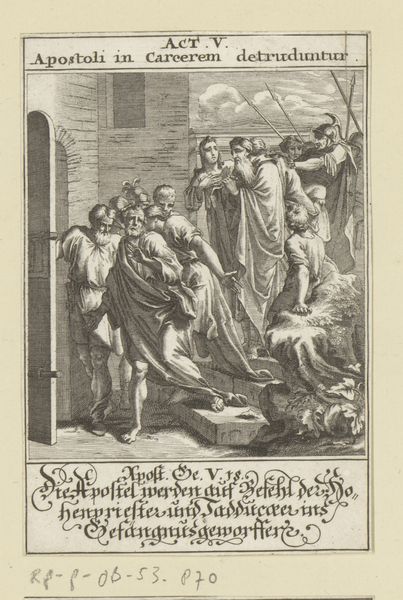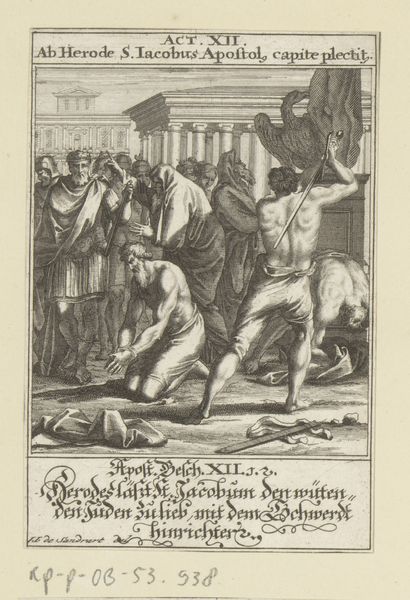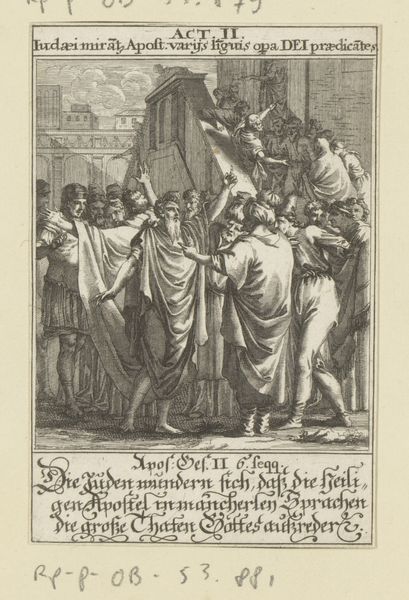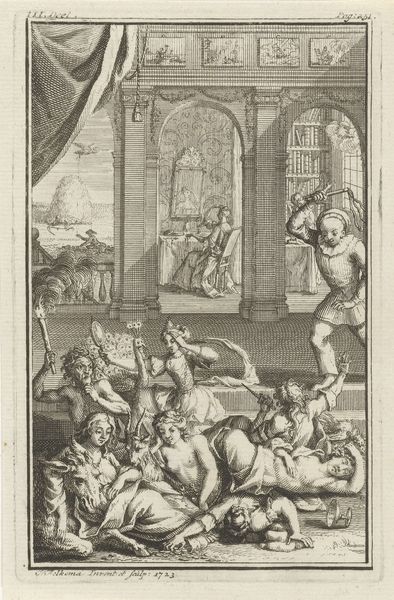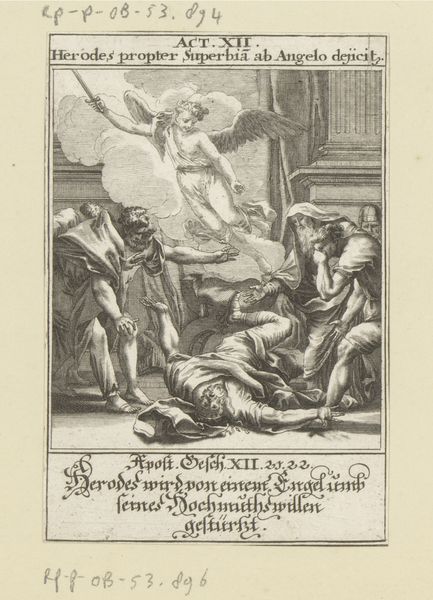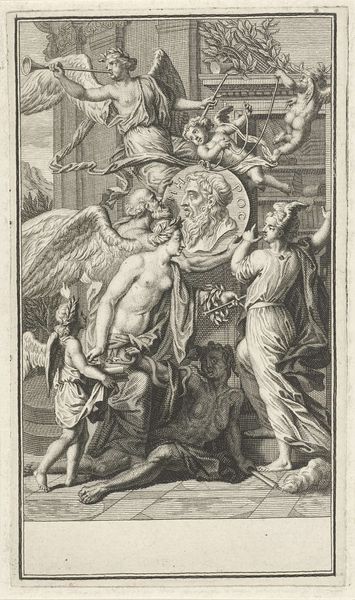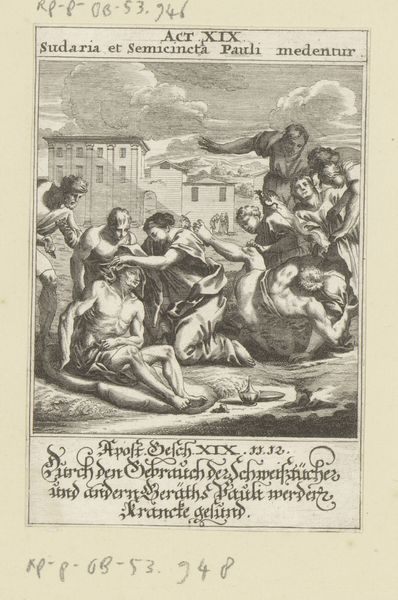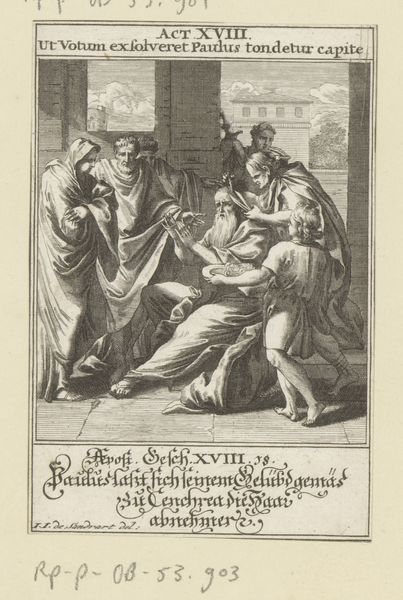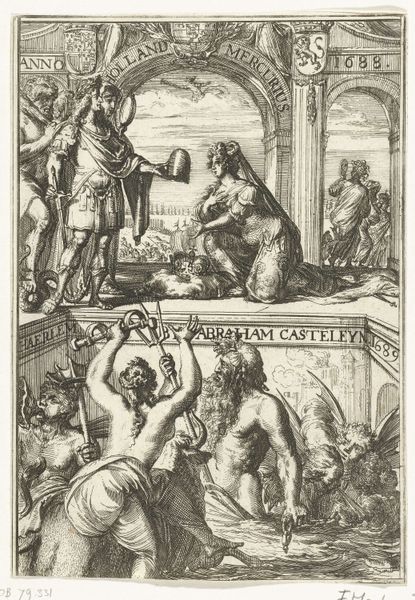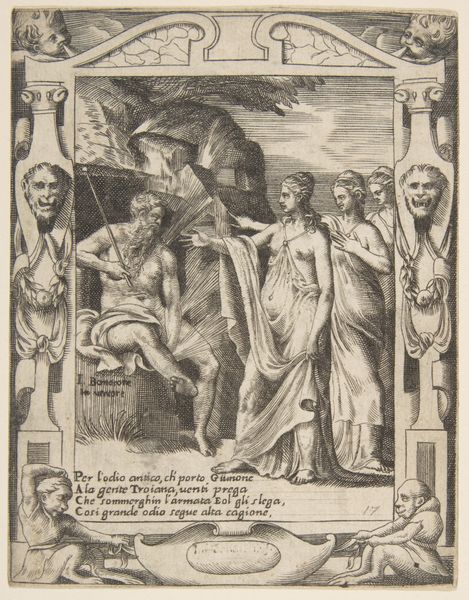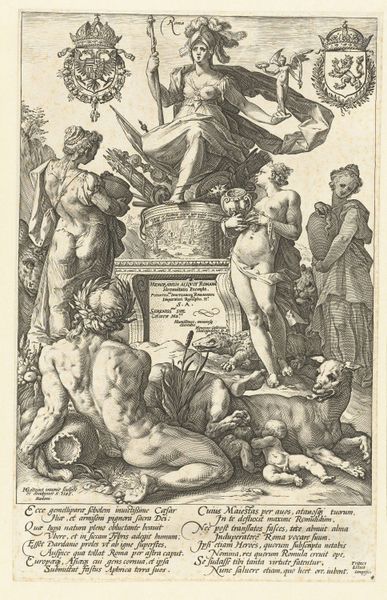
print, engraving
#
baroque
# print
#
old engraving style
#
figuration
#
history-painting
#
engraving
Dimensions: height 121 mm, width 80 mm
Copyright: Rijks Museum: Open Domain
Curator: This engraving from 1697, titled "Geseling van de apostelen," is currently held at the Rijksmuseum. It depicts the flagellation of the apostles. Editor: The initial impression is undoubtedly brutal. The composition, while classical, presents figures caught in intensely physical actions and conveys an undeniable violence. Curator: Indeed. What stands out for me is the depiction of bodies under duress and the very visible evidence of craft. Look closely, and you can appreciate how the engraver used the line to create texture, shadow, and even a sense of depth on what is ultimately a very flat material. The labor is etched into the metal, replicated for mass consumption. Editor: Absolutely. Consider the symbolic implications of this brutal scene. The flailing limbs and the almost theatrical display of torment serve as a testament to faith tested by suffering, an icon of persecution endured for belief. Curator: We could delve into the tools used, the paper itself, the conditions of the print shop in which this work was born, and the socioeconomic factors that drove its creation and distribution. Those materials can tell their own stories. Editor: A fascinating prospect. And the fact that this event is memorialized and given permanence in print speaks volumes about how societies assign value and create lasting visual narratives. Consider, too, how Baroque art uses such potent imagery to incite strong emotional responses in viewers. Curator: From my viewpoint, that speaks to the material conditions: this wasn't about rarified art, it was produced to reach people directly. The materiality democratizes the experience of art itself, it makes those high minded images accessible. Editor: It's compelling how different vantage points shed new light on an object and its lasting message, allowing one to recognize its continuing cultural potency. Curator: Precisely, finding new ways to talk about how images and labor persist through material memory.
Comments
No comments
Be the first to comment and join the conversation on the ultimate creative platform.
